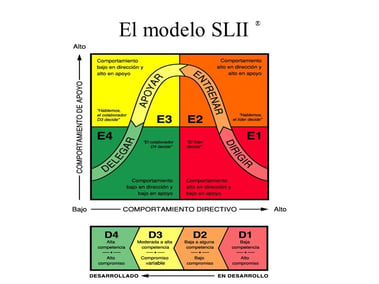
DO YOU LEAD, DELEGATE OR SUPPORT?
Creating a business project, such as opening a veterinary clinic, can raise many challenges. These include; how to create a company, what equipment is needed, the location and what services will be offered.
And if this is not enough, there's something else that will have to be dealt with: management.
As in almost all new endeavours, the most effective ways of learning is through trial and error, training in courses, seminars, attendance to congresses and workshops, reading books, specialized articles and, in the best of cases, with the collaboration of someone with more experience.
In any case, it is a long and intense process.
We have all faced that first day when someone is waiting for you to tell them what to do, or how to do it. We all tend to perform in the way that we've been taught, some with more and some with less fortune.
In general, in any team, whether it's in a clinic or another type of company, two qualities stand out:
- Experience
- Motivation
And what do we all want in our team?
Experienced and motivated people.
However, it is common to find:
- Highly motivated people who have limited experience - perhaps because these individuals have just started, they are eager to learn.
- Individuals with a lot of experience who are not very motivated - maybe they've been doing the same job for a long time and it no longer excites them in the same way it used to.
DO YOU THINK THAT THE WAY TO LEAD EACH OF THESE PROFILES IS THE SAME?
No, you have to be very flexible, and that is what situational leadership is based on.
The theory of situational leadership was designed by Hersey and Blanchard in 1967, and it suggests that the different types of leadership should change according to the maturity of the team, both in terms of competencies and in terms of attitude and commitment.
Most importantly, although it may seem obvious, EVERYONE needs leadership.
To represent the progression of an employee in a company, we will use the following graph:

Employee progression and management behavior
The curve represents each point you reach when starting a new job or task:
- This process can be lengthy, but is largely dependent on us as leaders.
- This process is continuous and dynamic and it can fluctuate as experience increases or decreases (e.g. assigning a new task), as can motivation.
- This process is not just for anyone's working life within the company, but is applicable to every new performance or situation that arises.
In general, everyone starts with a lot of motivation when embarking on a new project, and has little experience. Over time, that motivation may wane due to inexperience, which can lead us to make mistakes.
But little by little, as we gain experience, this motivation can increase again as our self-confidence grows and our results get better.
EACH STAGE REQUIRES A COMPLETELY DIFFERENT KIND OF LEADERSHIP.
Each model or form of leadership is represented in this quadrant:
E1: MANAGERIAL STYLE
In this case, leadership focuses on directing and helping to develop the individual, assigning him/her tasks according to his/her level, and helping him/her to carry them out. You need to know how your employees can gain the necessary skills for the tasks given, and by supplying them the tools and training they need.
You don't need to focus on motivating them, as they are already highly skilled in this area.
E2: COACHING STYLE
This style combines both leadership and motivation. It is used for employees whose motivation decreases when they make mistakes. This style helps to recognise that these mistakes can be positive, as one can learn from them.
The work being done must be supervised, provided with tools and corrected if necessary, while at the same time recognizing merit and slowly giving independence.
E3: SUPPORTIVE STYLE
Here, the important thing is to gradually relinquish control over the tasks being performed. If we continue to be on top of the employee, he/she may feel demotivated, as they may think that they aren't trusted with important responsibilities. Increasing motivation can greatly help experience.
E4: DELEGATION STYLE
This is the ultimate goal.
This type of leadership is effective for experienced and motivated contributors, and this style indicates when one should fully delegate a task or tasks given. This is because they have demonstrated that they know how to do them.
It is important to note that one should only delegate tasks when a person has been previously prepared, has been provided with the necessary tools to carry out the task, and has established objectives and timeframes, otherwise, this can lead to demotivation and frustration.
Another point to take into account is that many external factors can affect motivation (personal, health, family...) and in these cases, it's crucial to adopt a human and empathetic stance.
Now I propose a challenge to you. Identify each of your employees, establish what category they fit into, and decide if you are exercising the correct leadership with them.
It is important to have an individual chat with each employee to establish what motivates them.
Each person is placed in a point of the quadrant according to the task we are talking about, and some influence others. Find out not only what each of your employees is good at, but also what motivates them.

 English
English  Español
Español Català
Català